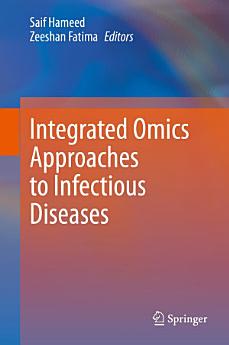Integrated Omics Approaches to Infectious Diseases
អំពីសៀវភៅអេឡិចត្រូនិកនេះ
អំពីអ្នកនិពន្ធ
Dr. Saif Hameed is currently an Associate Professor at Amity Institute of Biotechnology, Amity University, Haryana. Dr. Hameed did his Bachelor’s from the University of Delhi and Masters from Jamia Hamdard and completed his doctoral studies in Life Sciences from Jawaharlal Nehru University. He also worked as a visiting scholar in Institute für Mikrobiologie, Heinrich-Heine-Universität, Düsseldorf, Germany, in 2008. Dr. Hameed has received the Young Scientist award from the Science and Engineering Research Board, Department of Science and Technology, New Delhi. Dr. Hameed is actively engaged in research in infectious diseases particularly multidrug resistance (MDR) in pathogenic fungi. He has around 50 peer-reviewed papers to his credit in high repute journals, 3 books, 21 book chapters, and 25 popular articles, with 2 of them as ‘cover story’ and guided 4 doctoral students. He is a life member of the Association of Microbiologists of India (AMI) and the International Societyfor Infectious Diseases (ISID).
Dr. Zeeshan Fatima is currently working as Associate Professor at Amity Institute of Biotechnology, Amity University, Haryana. Dr. Fatima did her Bachelor’s and Masters from Banaras Hindu University and earned her doctoral degree in Biochemistry from Aligarh Muslim University. She has held research positions under nationally and internationally funded research projects, including her Research Associateship at BHU and JNU and postdoctoral training from the University of Cincinnati, Ohio, USA. Dr. Fatima has received two Young Scientist awards under Fast Track and Women Scientist Schemes, respectively, from the Science and Engineering Research Board, Department of Science and Technology, New Delhi. She is actively engaged in infectious diseases research, particularly on multidrug resistance in human pathogens, Mycobacterium tuberculosis and Candida albicans. She has 3 books and around 45 peer-reviewed papers to her credit in journals of highrepute and supervised 4 doctoral thesis. She is a life member of the Association of Microbiologists of India (AMI), Society of Biological Chemists (SBC), India and the International Society for Infectious Diseases (ISID).





